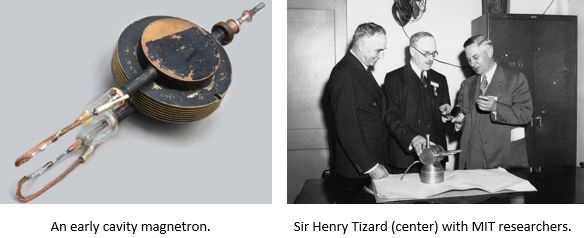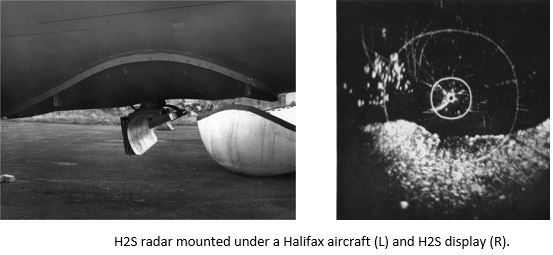The History Column: Tizard Mission
The second anniversary in this series is the Tizard Mission, in September 1940.
Sir Henry Tizard was a senior British civil servant who oversaw the early developments in British radar. Earlier in 1940, two British physicists at Birmingham University, John Randall and Henry Boot, had developed and demonstrated the cavity magnetron, which for the first time was able to generate substantial power (kilowatts) at microwave frequencies (in fact cavity magnetrons had been invented in other countries, notably France, Russia and Japan, prior to that, but development had not been pursued). The significance of this is that up until this time radar had been limited to relatively low frequencies, which meant that airborne radars, where the space available for the radar antenna was constrained, would have had rather poor angular resolution. But at microwave frequencies it was possible to achieve much better angular resolution, allowing aircraft to obtain a map-like display of the land and hence to navigate and bomb much more accurately, even through clouds.

Winston Churchill was persuaded that this technology should be shared with the USA, and so Tizard led a group of British scientists to the USA, bringing with them some examples of the magnetron. This was the Tizard Mission. The voyage across the Atlantic by ship was perilous, and the magnetrons were kept in a closely-guarded box. In a series of meetings in Washington and at MIT the secrets were shared. The significance was immediately realized by the Americans and the magnetron was put into production. It was described as’ … the most valuable cargo ever brought to our shores’.

The most widely-used British radar which used the magnetron was called H2S. This operated at S-band (around 3 GHz), and remained in service for more than 50 years, until 1993. The US equivalent operated at X-band (around 10 GHz) and was denoted H2X, and was in service from October 1943.
For further information, chapter 10 of Edward Bowen’s book Radar Days (Adam Hilger,1987) provides an account from one of the members of the Tizard Mission. Also: https://spectrum.ieee.org/tech-history/dawn-of-electronics/from-world-w…
Hugh Griffiths
University College London

